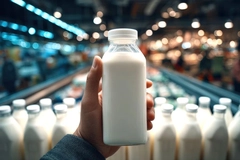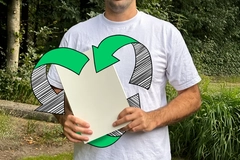Fashion Index aids brands’ shift to environmental packaging as consumer demand grows

25 May 2023 --- Fashion Index has updated its Eco-Friendly Packaging Sourcing Platform allowing fashion companies to find complimentary packaging retailers to support their ecological goals.
“Fashion Index was created to unite new and scale small to midsize [packaging] companies and fashion companies to find new solutions best suited to their needs,” Tirsa Parrish, co-founder and managing partner of Fashion Index, tells PackagingInsights.
Entrepreneurs preparing to launch a brand or expand an established one can create a free account to search the Fashion Index platform for packaging suppliers. The update allows the participants to filter their search results by sustainability and free trade.
“Entrepreneurs create a free account on Fashion Index to search global businesses with a mutual interest in [environmental] sustainability and offer various material options. Fashion Index offers a convenient way for manufacturers and suppliers to inform potential business partners of their production methods or products.”
Updated search engine
Fashion Index anticipates that more fashion brands will utilize its platform to intensify their commitment to environmental practices by sourcing eco-friendly packaging for e-commerce, brick-and-mortar retail and distribution purposes.
Fashion industry packaging was flagged as “not satisfactory” for sustainability. The company states that the search engine allows brands to source packaging from local suppliers to reduce transport distances and minimize their carbon footprint.
After identifying sustainable, eco-friendly packaging suppliers through Fashion Index’s searchable database, users can learn more about each supplier through its profile.
Every business profile on the platform includes a list of areas of expertise, a detailed business overview, previous and current partnerships, location and production volume. The user can contact a supplier directly through the platform if they seem compatible.
The business overview is a way for fashion brands to pick a corresponding packaging manufacturer that meets the ecological demands of the company.
“Fully eco-friendly packaging requires paying attention to many details, including materials, adhesives, ink for label printing and delivery methods,” says Parrish.
Excessively using plastic and cardboard
Parrish explains how packaging is involved in several stages of a fashion product’s life cycle. Individual packaging items are used to maintain the condition of clothing, such as master packing cartons or boxes and point-of-sale packaging.
“Each of these can be evaluated – recycled content, reusability, recyclability, packaging to product weight ratio and cumulative energy demand (to make and recycle) to help determine the sustainability of packaging,” she explains.
Parrish suggests using Hydropol – a material from Aquapak that completely dissolves in very hot water – as a plastic alternative due to the mass amounts of plastic used in packaging. “The amount of plastic used in packaging must be addressed because of its lifespan.”
She finds the volume of cardboard used in fashion packaging “daunting,” adding packing boxes travel long distances and often arrive in suboptimal conditions, so they cannot be reused to send the product to the next stage in the supply chain.
Impacting waste management Fashion Index is helping fashion brands find packagers that meet their sustainability goals.
Fashion Index is helping fashion brands find packagers that meet their sustainability goals.
Fashion Index’s co-founder highlights that the environmentally sustainable solutions in the fashion industry are limited, with some requiring a precise method of disposal for the packaging to break down or be recycled successfully. However, as demand grows inside and outside the industry, fashion brands will be driven toward more ecological practices.
“As companies with [environmentally] sustainable practices and products become more well-known, consumers will look to and demand these features from all companies in the fashion industry. The businesses must adopt sustainable procedures and materials to remain competitive.”
Parrish concludes that some industry members may perceive switching to more environmentally sustainable packaging as a small change for businesses, but she sees it significantly impacting waste management.
“While there has been work done toward integrating sustainable packaging into the industry, we do not believe it is satisfactory yet. This is not to say that the methods used today are inadequate, but rather an acknowledgment that there is still a long way to go and more to be done.”
“Gaps may be present in the current environment, and we believe many fashion companies are utilizing the sustainable packaging methods available. These efforts are made evident as industry members continue to explore and create new sustainable packaging methods,” concludes Parrish.
By Sabine Waldeck











